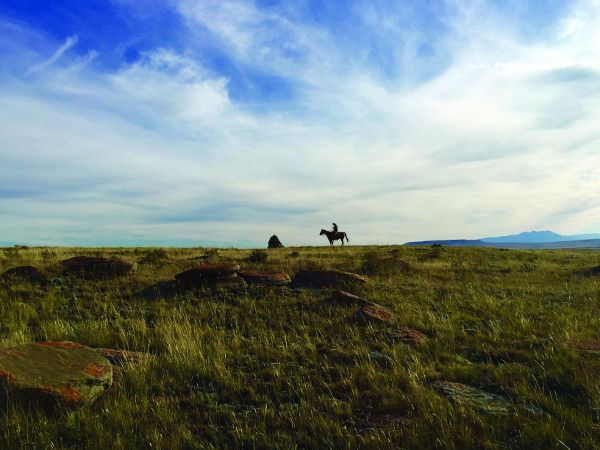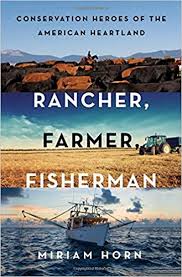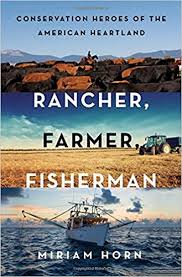Eye For Film >> Movies >> Rancher, Farmer, Fisherman (2016) Film Review
Rancher, Farmer, Fisherman
Reviewed by: Jennie Kermode

There has been a boom in environmental filmmaking over the past few years, corresponding with a rise in public concern about climate change, pollution, environmental destruction and the long term viability of life on Earth. Most of it makes for pretty grim viewing. If you're feeling emotionally exhausted by the likes of The Messenger, Ice And The Sky and An Inconvenient Sequel: Truth To Power, you can look forward to Rancher, Farmer, Fisherman, which introduces a welcome sliver of hope.
This film focuses not on politicians or powerful corporate figures but on ordinary working people who have decided to change the way they do things. We begin with the rancher who finds that traditional methods mean healthier animals and better quality meat, whilst helping to preserve the long-term viability of the land. Then the farmer who decides to try managing failing land with old fashioned crop rotation, companion plant and fallow field strategies rather than modern fertiliser, discovering in the process that the soil chemistry is massively improved and his yields are no longer diminishing year by year. Finally we move to the coast to meet fishermen who are advocating for strict quotas to let stocks recover and preserve jobs, all the while schooling themselves in ocean conservation. What's significant about each of these efforts is that it's not limited to one person - it has caught the imagination of others based nearby, and the rediscovered techniques are spreading, seen by many as a chance to fight back against long term decline.

Can individual efforts like this make a difference when corporate agriculture still favours more rigorous exploitation of the natural environment? Perhaps. It might help if the film included more information for consumers on how they can distinguish these products. Part of the point, however, is that the ranchers, farmers and (to a lesser extent) fishermen are benefiting even without increased interest from consumers, and that, over time, they are not experiencing the slump in production that advocates for modern methods frequently assume, so there's no need to cater to an elite market. They're also seeing an increase in wildlife which could have an important positive long term impact. There is talk of what the American plains were like when Europeans first set up lasting settlements there, and of what they failed to understand about how the land was managed prior to their arrival.
As often in this type of film, there is rather too little argument from opposing positions so we get a sense that we're only seeing part of the picture, but what we do see is undeniably impressive. We also get insights into individual family histories and the lives of the people working in these landscapes today. Quite aside from what thy are achieving, their actions are interesting because they represent an unusually successful grassroots movement in opposition to powerful established interests. The values that make this possible - loyalty to community, duty of care to animals, duty to the land itself - are visible in the portraits of them captured here.
In addition to all this, the film is stunningly beautiful. It doesn't flinch from the more brutal aspects of fishing and agriculture, but it captures classic American landscapes with a sense of awe rarely present in films set in the modern age. We get a sense of what these places mean to those who live in them and why so many people have chosen to stick with this hard life, generation after generation. The sense of history that this creates serves as a reminder of why it's so important to preserve it.
Reviewed on: 06 Dec 2017
















